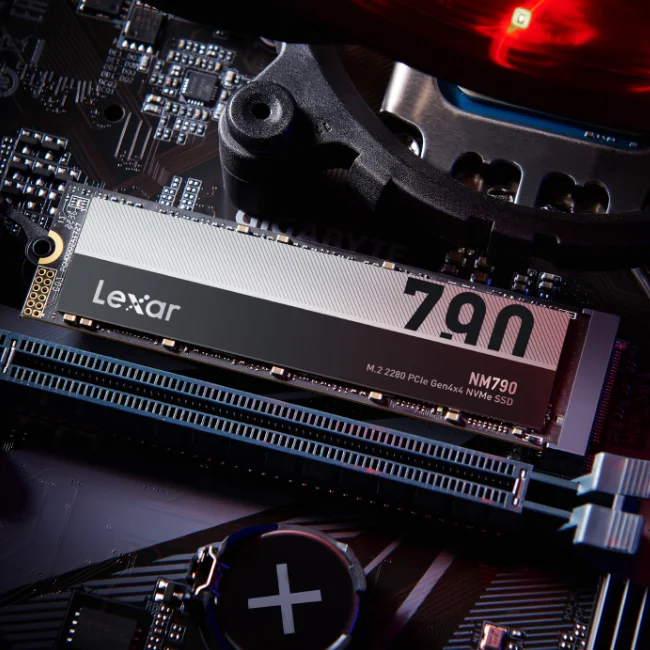QNAP TS-453 Mini NAS Review
QvPC – A NAS with PC features and VM
The QvPC technology is probably best solution for NAS servers since their original creation. Modern NAS devices have more than enough power to do so much more than just serving files and with the addition of a HDMI port you can use this QNAP TS-453 mini in more ways. You ran use it directly for HTPC functions and even install full operating systems in virtual environments.

To get started with this, you’ll need to install the HybridDesk Station. This is the base for your HDMI out and is required. There are a few default functions that you can’t unselect, but most are optional. As with all QNAP apps, you can remove, add, and modify these choices at any time.

The installation will take some time depending on how much you have selected. If you selected all, you easily can go make a cup of coffee as it will take a while.

Once the setup is done, it will look like the screenshot below. All the selected apps are installed and ready. You can disable and remove individual apps at wish.

Once you have the HybridDesk Station installed, you open the door to all sorts of fun directly on your NAS. But first you’ll need to login. If you haven’t already, connect a keyboard, mouse, and monitor to your NAS.



Browse the web with Firefox or as seen below with Chrome.

Configure your NAS directly from the NAS with the same interface that you’re used to from your browser. You can do it all.



There is no shortage on apps for your multimedia pleasures either. XMBC and KODI are probably the two most obvious choices, but there are more.


You don’t even have to have the files stored on the NAS itself to access them. I had no trouble streaming directly from my other network devices.

Full access to my video library thanks to DLNA support, in this case through KODI.


You can even game directly on the NAS. Two games are included right away and they arew OpenTTD and Battle for Wesnoth. Kick back and become the next virtual leader.


Virtualization Station
The second thing that QvPC brings along next to the HTPC usage is the virtualization station that allows you to install and run pretty much any operating system in a virtual environment. But we need to install and set the whole thing up before we can get started with the actual operating system.

When the Virtualization Station is launched, it will check for the minimum requirements that are QTS 4.1.0 or higher, Intel VT-x technology, and at least 2GB RAM.


The setup in itself is only two-step and a confirmation. Select the shared folder the VM has to run from and what network interface it shall use.

The network usage is the only downside to this function as it requires a dedicated LAN port. This prevents us from running our normal NAS operation with link aggregation. A lot of people won’t be able to fully utilize that speed anyway, so it isn’t a big deal.


The Virtualization Dashboard is as easy to use as any previous feature. You get a quick view of what’s going on and there is no doubt which menu point to click next.

We’ll want to see how this works, so I’ll create a VM for Windows and install my Windows 7 Ultimate operating system. I got an ISO file of this already, so it’s the obvious choice. It is also one of the most likely choices among users. Got an old spare license? Why not use it!

I picked the preconfigured large setup as it suits what I want very well. 4GB memory, 4 CPU cores and 160GB HDD should be enough to run Windows 7.

Now that the VM is created, I just need to start it. It will power on and automatically start the installation. But first you should connect your USB keyboard and mouse to the VM. You need a way to control it if you use it directly.

Installing Windows 7
Using the web interface to connect is a very convenient method, but not the smoothest ride. Anyone that ever worked with remote connections will know how it feels. It’s still a good experience and easy enough if you don’t need pixel accuracy in controls.



The installation runs just like you’re used to on any normal installation and once it is done, it will launch your fresh Windows VM installation for the first time configuration.




If it wasn’t for me selecting a wrong icon for the system manufacturer, one couldn’t see the difference to a normal installation. If you can install Windows on a normal computer, you can also install it in a QvPC environment.

Install and launch apps, run updates, browse the web, play media files – the choice is yours.

The web interface features a nice timeout functions, but you can quickly login again. It’s a nice and extra security for people that easily forget that they have that extra tab open.

Virtualization Station continued
Once the VM is running, we also see it in our VS dashboard. We can quickly get a view on what VMs we have running and how much performance they each use.

You can also important and export VMs with a few steps.

And you can download pre-made VM setups from the Bitnami App Store and VMware Virtual Appliances Marketplaces. There are a lot to choose from












